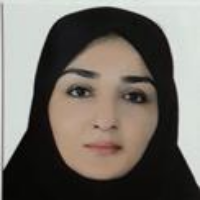Spatial analysis and modeling of effective factors on texture inefficiency of Mashhad pilgrimage city
Cities are dynamic systems, constantly evolving under the influence of social, cultural, economic, and political factors. Urban inefficiencies, particularly in certain textures, pose significant challenges to urban planners. Inefficient urban textures represent areas where physical, functional, and social quality are severely lacking. These textures, often formed over long periods, fail to meet the needs of their residents. The city of Mashhad, Iran’s second-largest metropolis, encompasses 6688 hectares of inefficient textures. These areas are marked by inadequate housing, inconsistent land use, and poor infrastructure, among other challenges, leading to a low quality of life for residents. This imbalance in physical development and population settlement poses numerous challenges. Hence, evaluating the vulnerability and inefficiency of these textures is critical. This study aims to investigate the spatial patterns of inefficiency in Mashhad's urban textures.
Theoretical Framework:
Inefficient urban textures are sections of a city where infrastructure, buildings, streets, and other components become ineffective, causing a range of socio-economic and physical problems for residents. These inefficient urban areas can be categorized into five types:2-1-Informal settlements: Primarily house rural migrants and the urban poor.
2-2-Middle inefficient (worn-out) textures: Parts of the city developed after the 1300s without adherence to architectural or urban planning standards.
2-3-Historical city textures: These sections hold historical value in urban planning and architecture but are now inefficient.
2-4-Urban areas with a rural background
Areas within the city that have not integrated with the broader urban fabric.
2-5-Areas with incompatible urban use: Locations where the current usage contradicts urban planning needs.
Understanding the development of these textures is crucial for assessing their inefficiency and the urban planning interventions required to address them.
The study employed a descriptive-analytical approach, gathering data through extensive library research and literature reviews. The study area consisted of 6688 hectares of inefficient textures in Mashhad. To assess the level of inefficiency in these areas, the WSUM (Weighted Sum) technique was employed. Further spatial analysis was conducted using ArcGIS software, with a particular focus on spatial self-dependency patterns, analyzed through models like the Global Moran Model and the G_i statistic. Geographically weighted regression (GWR) was then used to model the spatial relationships between different factors contributing to urban inefficiency.
The results showed that informal settlements and marginal areas of Mashhad are more inefficient compared to the middle and central parts of the city. Analyzing the spatial pattern of inefficiency using the Global Moran method and G_i statistics revealed that the inefficiencies follow a cluster pattern. The Global Moran method produced a positive score of 0.1, with a z-score of 68.26 at a significance level of 99%. This indicates a significant clustering of inefficient textures.
Further analysis with the G_i statistic showed a G value of 0.000120 and a z-score of 19.14, confirming a high-concentration clustering pattern of inefficiency. The spatial correlation analysis revealed that hot spots (high-concentration clusters) are located in the eastern, southeastern, and northwestern parts of the city, where informal settlements dominate. In contrast, cold spots (areas of low inefficiency) were concentrated in the central parts of the city, including the pilgrimage area. The spatial patterns in other parts of the city showed little or no significant clustering.
The geographically weighted regression (GWR) model revealed that microlithic buildings, rented housing, and unstable structures have a greater impact on the inefficiency of urban textures than other variables. The combination of spatial patterns and socio-economic factors suggests that the areas of Mashhad most in need of intervention are informal settlements and marginal areas.
While most studies on inefficient urban textures have utilized multi-criteria decision-making methods or statistical tests, few have focused on spatial analysis. This study introduced a new approach to understanding urban inefficiency by combining WSUM, Moran’s global method, and the G_i statistic to assess spatial patterns. The findings highlight the severe inefficiency in Mashhad’s informal and marginal areas compared to central areas.
Hot spots of inefficiency are concentrated in informal settlements on the city’s eastern, northeastern, and northwestern margins, creating a cluster pattern of inefficiency. In contrast, the pilgrimage area and central parts of the city show fewer inefficiencies. The GWR model further emphasized that unstable buildings and rented houses are key drivers of inefficiency in these areas.
The study underscores the importance of spatially targeted interventions, especially in informal settlements and marginal areas. Given the diverse types of inefficiencies across the city, urban planners must adopt differentiated strategies when addressing various forms of urban inefficiency. Addressing these issues in informal settlements should be a priority to improve the overall quality of life and urban function in Mashhad.
-
A Quantitative Assessment of The Impacts of Agricultural Development, With A Focus on Food Security and Desertification Risk in The Balajam Plain of Torbat Jam County, Khorasan Razavi Province
Mostafa Rezvanimoghadam, Morteza Akbari *, , Shojaat Zare
Desert Management, -
Evaluation of bond strength of glass fiber-reinforced polymer in concrete beams
Ali Zahmatkesh, *
Concrete Research Quarterly Journal, -
Tracing structural static path by dynamic relaxation method
Hossein Estiri *,
Journal of Solid and Fluid Mechanics, -
Aut Ecology, Ethnopharmacology, Ecomorphology Sclerorhachis leptoclada Boiss "Mastar" and Floristic Spectrum of Medicinal Plants in Ark (Birjand city)
Maliheh Mahmoudi *, MohammadJavad Seghatoleslami,
Journal of Sustainable Agricultural Research,




